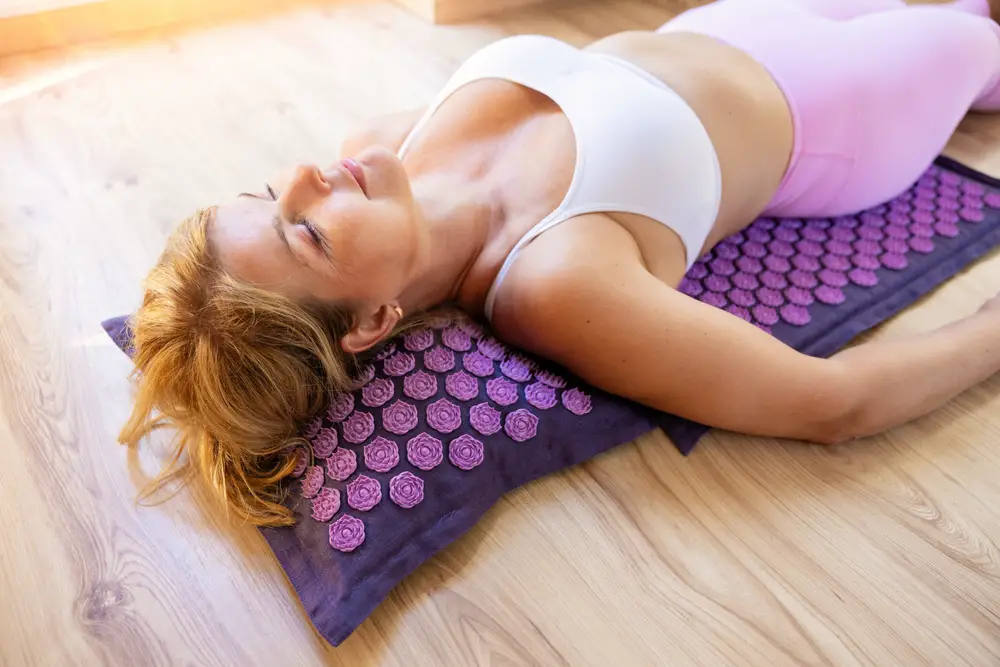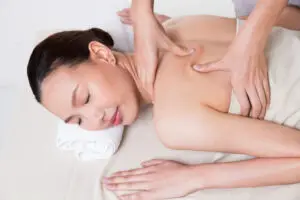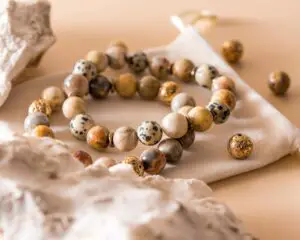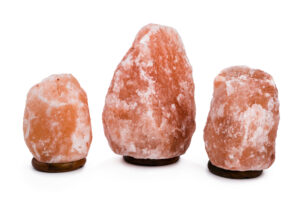Acupressure mats are a popular tool for self-care, deriving from the ancient principles of acupuncture and traditional Chinese medicine. These mats, often referred to as needle stimulation pads, are covered with hundreds of plastic nubs designed to apply pressure to specific points on the body when in contact with the mat.
By targeting these points, acupressure mats aim to alleviate pain, reduce tension, and promote relaxation, similar to how acupuncture and acupressure techniques work.
The science behind acupressure mats lies in the stimulation of acupoints – specific locations on the body that correspond to the body’s energy channels, or meridians.
In traditional Chinese medicine, it is believed that stimulation of these points can help clear blockages and restore balance in the flow of energy, or Qi, throughout the body. This in turn is thought to promote overall well-being and alleviate various physical and emotional ailments.
While research on acupressure mats is limited, anecdotal evidence suggests that they can provide relief from muscle pain, stiffness, and stress. Lying on an acupressure mat for just a few minutes every day may help improve circulation, induce deep relaxation, and even contribute to better sleep.
As interest in alternative therapies and self-care practices continues to grow, acupressure mats offer a convenient and accessible option for those seeking to experience the potential benefits of ancient Chinese healing techniques at home.
Understanding Acupressure Mats
Acupressure mats are a modern adaptation of the ancient practice of acupressure, offering a convenient and comfortable alternative to traditional Chinese medicine techniques. In this section, we will explore the similarities and differences between acupressure mats and acupuncture, their components, and the principles behind their functioning.
Acupressure Mats Vs Acupuncture
While both acupressure mats and acupuncture stem from traditional Chinese medicine, they differ in their application and invasiveness. Acupuncture involves inserting thin needles into specific pressure points along the body’s meridians to balance qi or chi, the vital energy flow in the body.
Acupressure mats, on the other hand, utilise plastic spikes to apply non-invasive pressure to these same points. The pressure encourages blood flow and releases tension, providing relief from aches and pains without the need for needles.
Components of an Acupressure Mat
The main components of an acupressure mat are the plastic spikes, which simulate the pressure applied during acupuncture, and a cushioned base for comfort. The spikes are typically made from toxic-free surgical plastic, ergonomically engineered to have a soothing effect. The base is often made of foam or another soft material, providing support and comfort during use.
Principles of Acupressure Mats
Acupressure mats work by targeting the body’s pressure points, also known as acupoints. These points lie along meridians, the energy channels in Chinese medicine. When pressure is applied to these points, it stimulates the release of neurotransmitters that block pain and induce relaxation, improving overall well-being and promoting a sense of peace and energy.
The broad coverage of the mat allows it to target multiple pressure points at once, similar to how foam rollers and massage balls work for self-myofascial release but on a larger scale.
By understanding the differences between acupressure mats and acupuncture, the essential components of an acupressure mat, and the principles behind its functioning, one can better appreciate the potential benefits and applications of this alternative therapy tool.
Health Benefits of Acupressure Mats
Relief from Back and Neck Pain
Acupressure mats can provide natural relief from back and neck pain by targeting specific pressure points on the body. When you lie on the mat, the tiny spikes apply pressure to these points, helping to alleviate muscle tension and discomfort. For people suffering from low back pain or neck pain, using an acupressure mat may help manage their symptoms and provide cost-effective therapy.
Improved Sleep and Relaxation
In addition to easing pain, acupressure mats can help improve sleep and overall relaxation. Lying on the mat stimulates the release of endorphins, which can reduce stress, anxiety, and elevate mood. This, in turn, can lead to better quality sleep and reduced insomnia.
Incorporating an acupressure mat into your daily routine could be a beneficial habit for those looking to destress and improve their sleep patterns.
Enhanced Wellness and Quality of Life
The regular use of an acupressure mat may lead to an enhanced sense of wellness and an improved quality of life. By alleviating stress, promoting relaxation, and reducing muscle tension, these mats can contribute to a healthier, more balanced lifestyle.
Furthermore, incorporating acupressure mats into one’s daily routine can act as a preventative measure, potentially warding off diseases related to high blood pressure or poor circulation.
Boosted Blood Circulation
Using acupressure mats can help boost blood circulation by stimulating pressure points on the body. Increased blood flow can provide oxygen and nutrients to sore muscles, promoting faster recovery and reduced inflammation. Improved circulation can also contribute to better overall health, as it may help regulate high blood pressure and reduce the risk of diabetes.
Promoting Recovery and Relief
Incorporating an acupressure mat into your self-care routine can support recovery and provide relief from muscle soreness. By targeting pressure points and increasing blood flow, these mats can help relax tense muscles and alleviate discomfort. Whether you’re recovering from a workout or simply seeking relief from daily aches and pains, an acupressure mat can play a supportive role in your wellness journey.
Practical Tips for Using Acupressure Mats
Choosing the Right Mat
Selecting an appropriate acupressure mat is crucial for receiving the most benefits from the therapy. Look for a mat that provides firm support and has adequate spikes or points to stimulate the meridian points on your body effectively. Ensure the mat can cover the major areas, such as your back, neck, and shoulders, where you experience tension and require relief.
Acupressure Mat and Pregnancy
Pregnant individuals should consult with their healthcare providers before using an acupressure mat, as certain acupressure techniques are not advised during pregnancy. Always follow any medical guidelines provided for your safety and that of your baby.
Preparing for Acupressure Therapy
Before lying down on the acupressure mat or using any other acupressure tools, prepare yourself by wearing comfortable clothing that will not interfere with the pressure points. A light t-shirt is often suitable. Make sure the area where you plan to use the mat is quiet and conducive to relaxation. Additionally, having a foam roller or other support items to target specific points on the body can enhance your experience.
Correct Positioning
Correct positioning is vital when using an acupressure mat. Place the mat on a flat, solid surface, such as the floor or a firm mattress. Ensure that the mat is properly aligned with your body, particularly your back, neck, and shoulders, to stimulate the appropriate pressure points. If necessary, use socks or a pillow for added comfort and support.
Duration and Frequency of Use
Each individual’s experience with acupressure mats may vary, with some anecdotal reports suggesting immediate relief and others recommending consistent use over time. In general, it is safe to use an acupressure mat daily for around 10-30 minutes, depending on your comfort levels. Experiment with the duration and frequency that works best for your needs and make adjustments as necessary.
Contraindications and Precautions
Individuals with Skin Sensitivity
People with thin skin or skin sensitivities should exercise caution when using acupressure mats. The mats typically have plastic spikes that provide stimulation to various points on the body. For individuals with sensitive skin, these spikes may cause irritation or discomfort. It’s advisable to use a thin layer of fabric between the skin and the mat to minimise any potential irritation.
People with Poor Circulation
Some individuals experience poor circulation, which can lead to issues like cold hands and feet, numbness, or even more serious conditions. Acupressure therapy may help improve circulation; however, those with pre-existing circulatory issues should consult a medical professional or an acupuncturist before using an acupressure mat to ensure it is safe and appropriate for their specific needs.
Foot Pain and Acupressure Mats
Foot pain can stem from various causes, including plantar fasciitis, arthritis, or other conditions. While reflexology, a practice related to acupressure, has been used to help alleviate foot pain, it’s essential to consult a medical professional or a reflexology practitioner before using an acupressure mat for any foot pain relief. They can guide you on the proper technique and pressure points to target, ensuring safe and effective treatment.
When Acupressure Therapy is Not Recommended
There are certain situations where acupressure therapy may not be recommended. For instance, individuals with open wounds, bruises, varicose veins, or any area that is bruised or swollen should avoid using acupressure mats 1. Moreover, those with low platelets or on blood thinners should consult their doctor before receiving acupressure therapy.
Nervous System Considerations
Although acupressure is generally considered a safe and non-invasive therapy, individuals with specific nervous system conditions, such as epilepsy or multiple sclerosis, should check with a medical professional or an acupressure practitioner before using an acupressure mat.
The stimulation provided by the mat could potentially affect the nervous system; thus, it’s important to ensure the therapy is tailored to the person’s needs and is done safely.
Scientific Evidence and Anecdotal Reports
Research on Acupressure Mats
Although scientific evidence supporting the effectiveness of acupressure mats is limited, some studies do exist. The primary issue with these studies is their small sample sizes, making it difficult to draw definitive conclusions. However, the limited research suggests that using these mats might provide relief from pain and stiffness and promote relaxation, potentially through the stimulation of specific acupoints and meridians.
Experiences and Testimonials
Despite the limited scientific research, anecdotal reports testify to the potential benefits of acupressure mats. Many users have experienced improvements in sleep quality and even some potential impact on weight management, as a study on ear acupressure showed a reduction in BMI over eight weeks. Keep in mind that these testimonials are not scientific proof and should be considered with a degree of caution.







